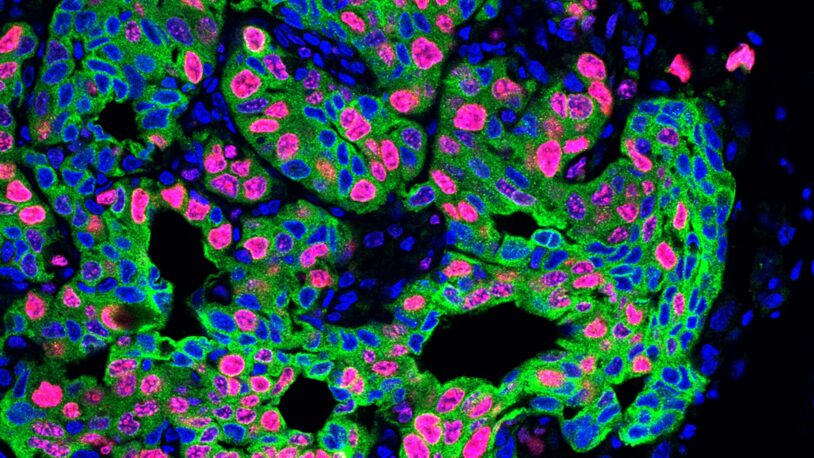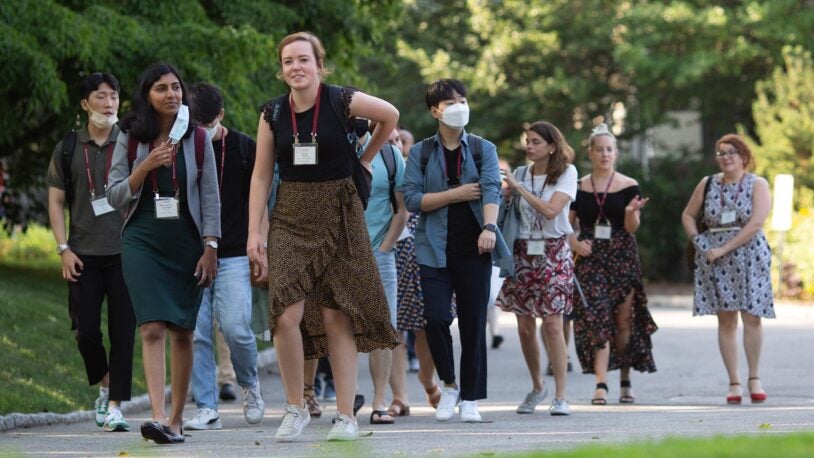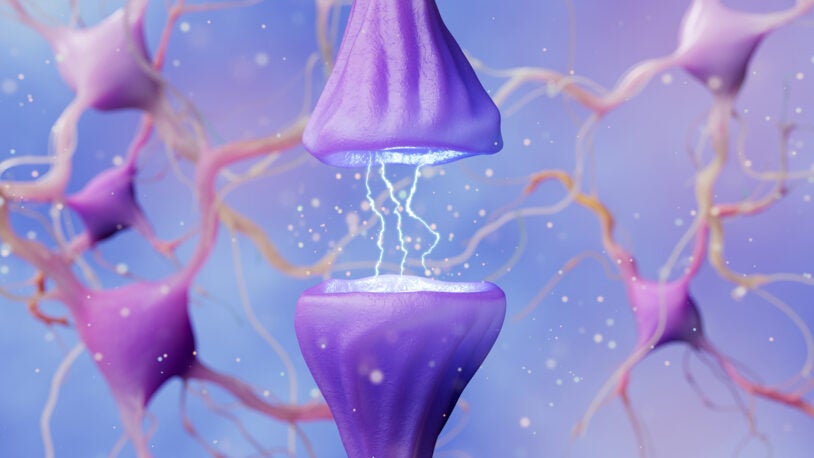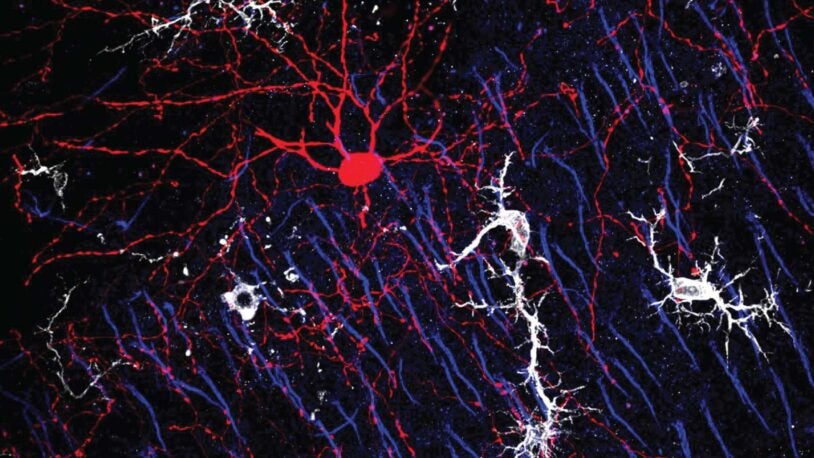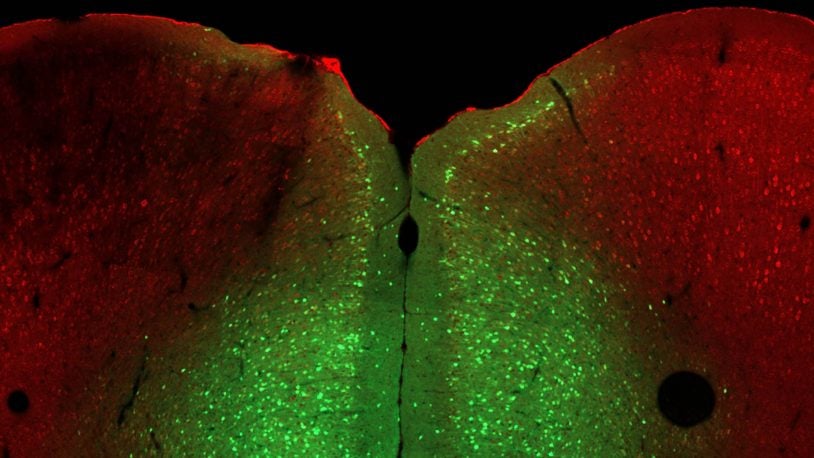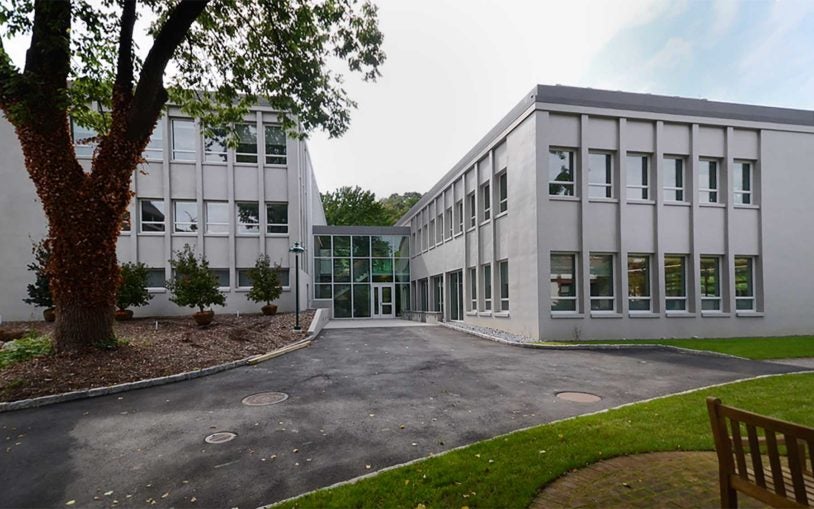
Linda Van Aelst
Professor
Harold and Florence & Ethel McNeill Professor of Cancer Research
Cancer Center Program Co-Leader
Ph.D., Catholic University of Leuven, 1991
vanaelst@cshl.edu | 516-367-6829
Faculty ProfileNormal cell function relies on coordinated communication between all the different parts of the cell. These communication signals control what a cell does, what shape it takes, and how it interacts with other cells. I study these signaling networks to understand how they guard against cancer and neurological disorders.
Linda Van Aelst’s lab studies how aberrations in intracellular signaling involving enzymes called small GTPases can result in disease. They are particularly interested in Ras and Rho GTPases, which help control cellular growth, differentiation, and morphogenesis. Alterations affecting Ras and Rho functions are involved in cancer and various neurodevelopmental disorders. Van Aelst’s team has extended its prior study of mutations in a Rho-linked gene called oligophrenin-1 (OPHN1), part of an effort to connect the genetic abnormalities associated with mental retardation to biological processes that establish and modify the function of neuronal circuits. In addition to a role for OPHN1 in activity-driven glutamatergic synapse development, lab members have obtained evidence that OPHN1 has a critical role in mediating mGluR-LTD (long-term depression), a form of long-term synaptic plasticity, in CA1 hippocampal neurons. Their findings provide novel insight not only into the mechanism and function of mGluR-dependent LTD, but also into the cellular basis by which mutations in OPHN1 could contribute to the cognitive deficits observed in patients. Defects in cortical neurogenesis have been associated with cerebral malformations and disorders of cortical organization. The Van Aelst team discovered that interfering with the function of the Rho activator DOCK7 in neuronal progenitors in embryonic cerebral cortices results in an increase in the number of proliferating neuronal progenitors and defects in the genesis of neurons. In an extension of these studies, the Van Aelst team this year showed that DOCK7 has a central regulatory role in the process that determines how and when a radial glial cell progenitor “decides” to either proliferate, i.e., make more progenitor cells like itself, or give rise to cells that will mature, or “differentiate,” into pyramidal neurons. These lines of research provide novel insight into mechanisms that coordinate the maintenance of the neural progenitor pool and neurogenesis.
Veronica Beard hosts CSHL–Penny’s Flight fundraiser
April 7, 2025
Fashion meets philanthropy as CSHL and Penny’s Flight Foundation partner with Veronica Beard to support groundbreaking research.
CSHL high schoolers named top Regeneron Scholars
March 3, 2025
CSHL volunteer Ishana Chadha and Partners for the Future participant Keita Takahashi are among the top student scientists in the U.S.
New hope in the fight against neurofibromatosis
March 18, 2024
A partnership between CSHL and the Penny’s Flight Foundation aims to find a cure for NF1, the world’s most common single-gene neurological disorder.
Chronic stress spreads cancer … here’s how
February 22, 2024
CSHL researchers have discovered a new link between chronic stress and cancer metastasis, providing a possible path forward for new treatments.
President’s essay: Bringing bold visions to life
May 26, 2023
CSHL President & CEO Bruce Stillman sees the Laboratory as a global hub for scientific expertise and a powerful launchpad for early-career scientists.
Communication breakdown in the brain
January 3, 2023
Inside the research to get neurons back in a healthy conversation with one another.
Uncovering how immune cells nurture brain connections
March 7, 2022
Microglia cells nurture connections during brain development, which contrasts to the cells’ previously understood role in pruning connections.
Reversing a genetic cause of poor stress responses in mice
April 7, 2021
CSHL researchers discovered how a gene prevents mice from coping with stressful situations. They found several ways to reverse its effects.
How chandelier cells light up the brain
June 18, 2020
Until now, chandelier cells were largely enigmatic, but new technology makes them accessible to researchers.
Historic building—groundbreaking science
October 29, 2019
The Demerec building has been monumental in scientific history. Now, a $75 million renovation of this celebrated labspace will define CSHL’s future.
All Publications
Cognition and behavior in neurofibromatosis type 1: report and perspective from the Cognition and Behavior in NF1 (CABIN) Task Force
24 Mar 2025 | Genes & Development
Gutmann, David; Anastasaki, Corina; Gupta, Aditi; Hou, Yang; Morris, Stephanie; Payne, Jonathan; Raber, Jacob; Tomchik, Seth; Van Aelst, Linda; Walker, James; Yohay, Kaleb; CABIN Task Force;
Restoring transient connectivity during development improves dysfunctions in fragile X mice
9 Sep 2024 | bioRxiv
Dumontier, Dimitri; Liebman, Samuel; Le, Viet-Hang; George, Shanu; Valdemar, Deasia; Van Aelst, Linda; Pouchelon, Gabrielle;
Next Directions in the Neuroscience of Cancers Arising outside the CNS
4 Apr 2024 | Cancer Discovery | 14(4):669-673
Amit, Moran; Anastasaki, Corina; Dantzer, Robert; Demir, Ihsan; Deneen, Benjamin; Dixon, Karen; Egeblad, Mikala; Gibson, Erin; Hervey-Jumper, Shawn; Hondermarck, Hubert; Magnon, Claire; Monje, Michelle; Na'ara, Shorook; Pan, Yuan; Repasky, Elizabeth; Scheff, Nicole; Sloan, Erica; Talbot, Sebastien; Tracey, Kevin; Trotman, Lloyd; Valiente, Manuel; Van Aelst, Linda; Venkataramani, Varun; Venkatesh, Humsa; Vermeer, Paola; Winkler, Frank; Wong, Richard; Gutmann, David; Borniger, Jeremy;
Chronic stress increases metastasis via neutrophil-mediated changes to the microenvironment
13 Feb 2024 | Cancer Cell
He, Xue-Yan; Gao, Yuan; Ng, David; Michalopoulou, Evdokia; George, Shanu; Adrover, Jose; Sun, Lijuan; Albrengues, Jean; Daßler-Plenker, Juliane; Han, Xiao; Wan, Ledong; Wu, Xiaoli; Shui, Longling; Huang, Yu-Han; Liu, Bodu; Su, Chang; Spector, David; Vakoc, Christopher; Van Aelst, Linda; Egeblad, Mikala;
Antibody-directed extracellular proximity biotinylation reveals that Contactin-1 regulates axo-axonic innervation of axon initial segments
26 Oct 2023 | Nature Communications | 14(1):6797
Ogawa, Yuki; Lim, Brian; George, Shanu; Oses-Prieto, Juan; Rasband, Joshua; Eshed-Eisenbach, Yael; Hamdan, Hamdan; Nair, Supna; Boato, Francesco; Peles, Elior; Burlingame, Alma; Van Aelst, Linda; Rasband, Matthew;
Metabolic partitioning in the brain and its hijacking by glioblastoma
30 Aug 2023 | Genes & Development | 37:681-702
de Ruiter Swain, Jed; Michalopoulou, Evdokia; Noch, Evan; Lukey, Michael; Van Aelst, Linda;
Antibody-directed extracellular proximity biotinylation reveals Contactin-1 regulates axo-axonic innervation of axon initial segments
6 Mar 2023 | bioRxiv
Ogawa, Yuki; Lim, Brian; George, Shanu; Oses-Prieto, Juan; Rasband, Joshua; Eshed-Eisenbach, Yael; Nair, Supna; Boato, Francesco; Peles, Elior; Burlingame, Alma; Van Aelst, Linda; Rasband, Matthew;
Microglia regulate chandelier cell axo-axonic synaptogenesis
15 Mar 2022 | Proceedings of the National Academy of Sciences of the United States of America | 119(11):e2114476119
Gallo, Nicholas; Berisha, Artan; Van Aelst, Linda;
Connecting copper and cancer: from transition metal signalling to metalloplasia
11 Nov 2021 | Nature Reviews Cancer
Ge, Eva; Bush, Ashley; Casini, Angela; Cobine, Paul; Cross, Justin; DeNicola, Gina; Dou, Q; Franz, Katherine; Gohil, Vishal; Gupta, Sanjeev; Kaler, Stephen; Lutsenko, Svetlana; Mittal, Vivek; Petris, Michael; Polishchuk, Roman; Ralle, Martina; Schilsky, Michael; Tonks, Nicholas; Vahdat, Linda; Van Aelst, Linda; Xi, Dan; Yuan, Peng; Brady, Donita; Chang, Christopher;
Oncogenic KRAS engages an RSK1/NF1 pathway to inhibit wild-type RAS signaling in pancreatic cancer.
25 May 2021 | Proceedings of the National Academy of Sciences of the United States of America | 118(21):e2016904118
Cheng, Derek; Oni, Tobiloba; Thalappillil, Jennifer; Park, Youngkyu; Ting, Hsiu-Chi; Alagesan, Brinda; Prasad, Nadia; Addison, Kenneth; Rivera, Keith; Pappin, Darryl; Van Aelst, Linda; Tuveson, David;



